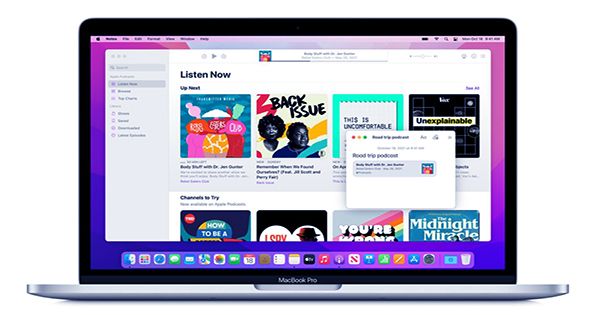For several industries, the last year and a half have been a big revelation. As more white-collar workers transition to remote work, it is becoming clear how ill-equipped many home offices are to handle hour after hour of Zoom calls. Even while PC and tablet sales soared in 2020, consumer electronics businesses were slow to respond — which is understandable given the lengthy period it takes to bring a product to market, with many undisclosed goods still in the works.
Monterey (in part) includes certain crucial features introduced in an era of remote work — and life) and is available today as a free update on compatible computers. It is probably no surprise that the new operating system arrives at the same time as Apple hardware, such as the MacBook Pro and M1-powered iMac, receives long-overdue camera and microphone updates. FaceTime is what Apple is referring. In terms of teleconferencing, the corporation is in an unusual situation because, unlike Microsoft or Google, it does not have a corporate teleconferencing platform. Apple added the option to host up to 32 people on a call last year, which obviously expands the possibilities, but there is currently no “FaceTime for Business.” This is an agreement between friends and family.
This time around, Apple’s video calling software receives some significant improvements. The most recent addition to the list is SharePlay, which has been delayed on desktop but is presently scheduled for release later this fall. It is also likely to be included in the soon-to-be-released iOS 15.1. The functionality is essentially a built-in version of the watch-together features that streaming services rolled out last year during the peak of the pandemic.
Disney+, Hulu, HBO Max, the NBA app, Twitch, TikTok, MasterClass, Zillow, Paramount+, and ESPN+ are among the launch partners for the functionality, which was specially built to complement Apple’s own services TV+ and Apple Music. Although there is a good mix of services, certain huge brands, such as Netflix, Amazon, and Spotify, are noticeably absent. The feature effectively synchronizes video and audio information, allowing group members to react in real-time to what they are seeing and hearing. When a user plays/pauses/fast forwards/rewinds, the volume adjusts to match the audio coming from the speakers, and playback is synchronised. Users will also be able to use the feature on an Apple TV-equipped television.
A share screen function, similar to what you would see on a site like Zoom, is also new, allowing you to offer windows to other call participants. Spatial Audio is now available on FaceTime as well. I just tried it out while testing the latest AirPods and was impressed by the functionality, which uses the position of a speaker’s window to approximate the location of their music. For the time being, it is just a gimmick, but it is a fun one. This time around, one of the most intriguing additions is the ability to join a FaceTime call from outside of the Apple ecosystem. Although functionality is still limited, users can use the Chrome or Edge browsers to create a link that others on Android or Windows devices can join. Users do not need an account to participate in the call, but they must escort in after clicking the link.













